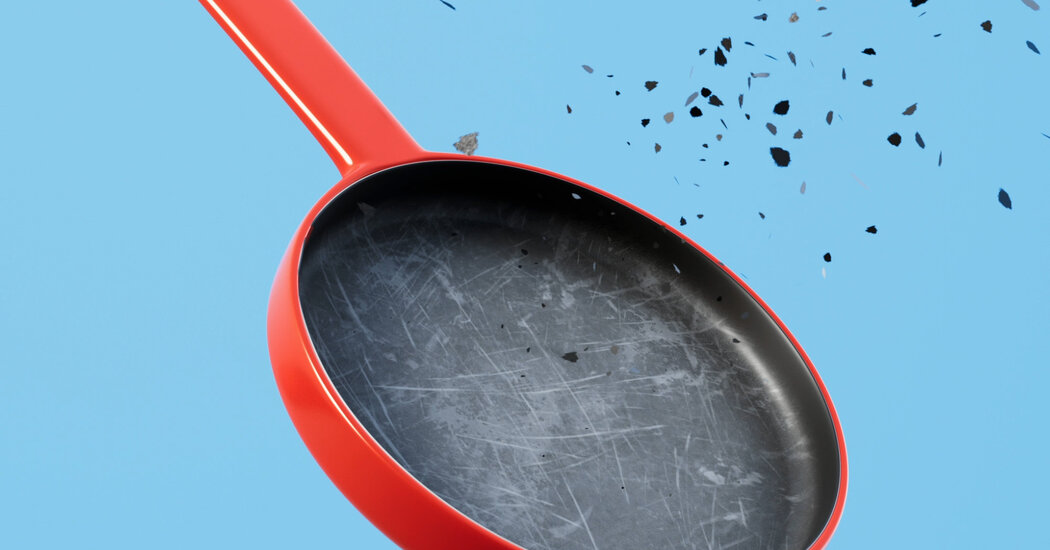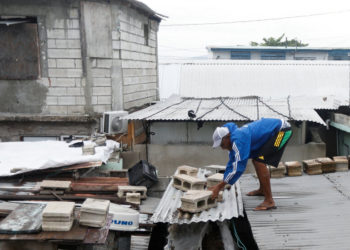If you’re looking for a new pot or frying pan these days, prepare to get bombarded by terms like “nontoxic,” “PFAS-free” and “PTFE-free.”
But these labels don’t necessarily mean what you might think. In 2023, the popular cookware brand HexClad was sued by a group of consumers for this very reason. They claimed several of the company’s pans were labeled nontoxic but contained a chemical called PTFE, commonly marketed as Teflon, which can release toxic fumes when overheated.
Hexclad denied wrongdoing but agreed to pay a $2.5 million settlement.
So how much should you worry about your cookware, and what do the reassuring labels actually mean? Here’s what you should know.
The dangers of certain pots and pans
Safety concerns about cookware mostly revolve around a class of chemicals known as PFAS, also called “forever chemicals” because they can linger in the environment and our bodies for years. Some PFAS have been linked to cancers, liver disease and developmental delays in children.
Today, there are thousands of these chemicals around us. But the first to gain prominence was Teflon. It was discovered by accident in 1938 and became best known as the coating on nonstick cookware, because it’s so slippery and so stable. After you’ve scrambled eggs in a Teflon pan, the eggs release and the Teflon stays.
Or at least that’s the idea. Metal utensils or years of wear and tear can scratch and chip pans, which can lead to some of the coating getting into your food, even if you can’t see it.
And Teflon is only safe up to certain temperatures — often estimated around 500 degrees Fahrenheit. Above that, it can release fumes and — in rare cases — cause an illness often called “Teflon flu,” with symptoms like vomiting and high fever. More than 220 suspected cases were reported in the U.S. in 2024, according to America’s Poison Centers.
Chemours, the company behind Teflon, says on its website that its coatings comply with global regulations and if someone were to accidentally ingest flakes from its coating, “data indicates that there are no health effects.”
PTFE is no longer patented and most generic nonstick pans use it. Experts think the chemical is relatively safe when used properly, but there are concerns about other forever chemicals in some coatings.
The most worrisome of these chemicals, called PFOA, has been phased out of new products, but was used in the Teflon manufacturing process for decades. If you have a nonstick pan sold before 2014, there’s a chance it could contain some residual PFOA and you should consider replacing it.
As for the other chemicals, it’s hard to quantify the danger. “We know that using harmful chemicals like PFAS in cookware raises the risk of health impacts,” Katie Pelch, a senior scientist at the Natural Resources Defense Council. “But that doesn’t guarantee that any particular individual is going to experience those harms.”
Some experts, including some chefs, say the health risks are overstated, since everyday cooking doesn’t require such high temperatures. But others point out that it doesn’t take much to damage cookware.
“I don’t know anyone who hasn’t scratched or overheated a pan,” said Keith Vorst, an associate professor of food science and director of the Polymer and Food Protection Consortium at Iowa State University.
What ‘nontoxic’ means
Many companies are marketing pans with ceramic coatings as an alternative to Teflon. These are smooth and durable and their coatings are made from sand or clay. But they may contain other chemicals, too, including forever chemicals.
And it’s difficult to know exactly what’s in those coatings. Most cookware brands outsource manufacturing to external suppliers, Dr. Vorst said, so they may not know themselves. They turn to third-party labs to test and verify claims that their products are free from certain toxins.
But because there are thousands of types of PFAS, it’s virtually impossible to test for all of them, he added. Also, what is considered PFAS in Canada might not be classified as such in the United States, according to Kevin Golovin, an associate professor of mechanical engineering at the University of Toronto.
All this is a reminder that “nontoxic” is really a marketing term and not an absolute guarantee, Dr. Vorst said. “There is no such thing as toxic-free,” he added.
How to look for safer products
If you’re trying to avoid forever chemicals, the best way is to use uncoated cookware like cast iron, stainless steel, carbon steel or fully ceramic pots and pans. You can use glassware for baking. However, uncoated pans can be harder to clean, require oil or butter to prevent sticking and often cost more than nonstick alternatives.
If you’re buying nonstick pans, look for products that are advertised as PFAS-free or fluorine-free (which is easier to test for). Both indicate the cookware is free of a wider range of chemicals than those labeled PTFE-free, Dr. Golovin said. Every product sold in the U.S. today should be PFOA-free, so that label doesn’t mean much.
Manufacturers recommend replacing coated cookware every two to five years, or once the coating starts to peel. Even Le Creuset, known for its sturdy enameled cast iron, says its lifetime warranty does not extend to items with nonstick coatings or pieces not made of cast iron.
All coated cookware contains potential contaminants, and any kind of scratched surface can release fragments, even if you can’t see them, Dr. Golovin said. Never heat empty coated pots or pans, and hand-wash them when possible.
Even for experts, it can be tough to know what to trust. “We all want to just make healthy, nutritious food to feed our families and ourselves,” Dr. Pelch said. But “there’s not a lot of disclosure about what’s used in cookware.”
The post How Nontoxic Is ‘Nontoxic’ Cookware? appeared first on New York Times.




